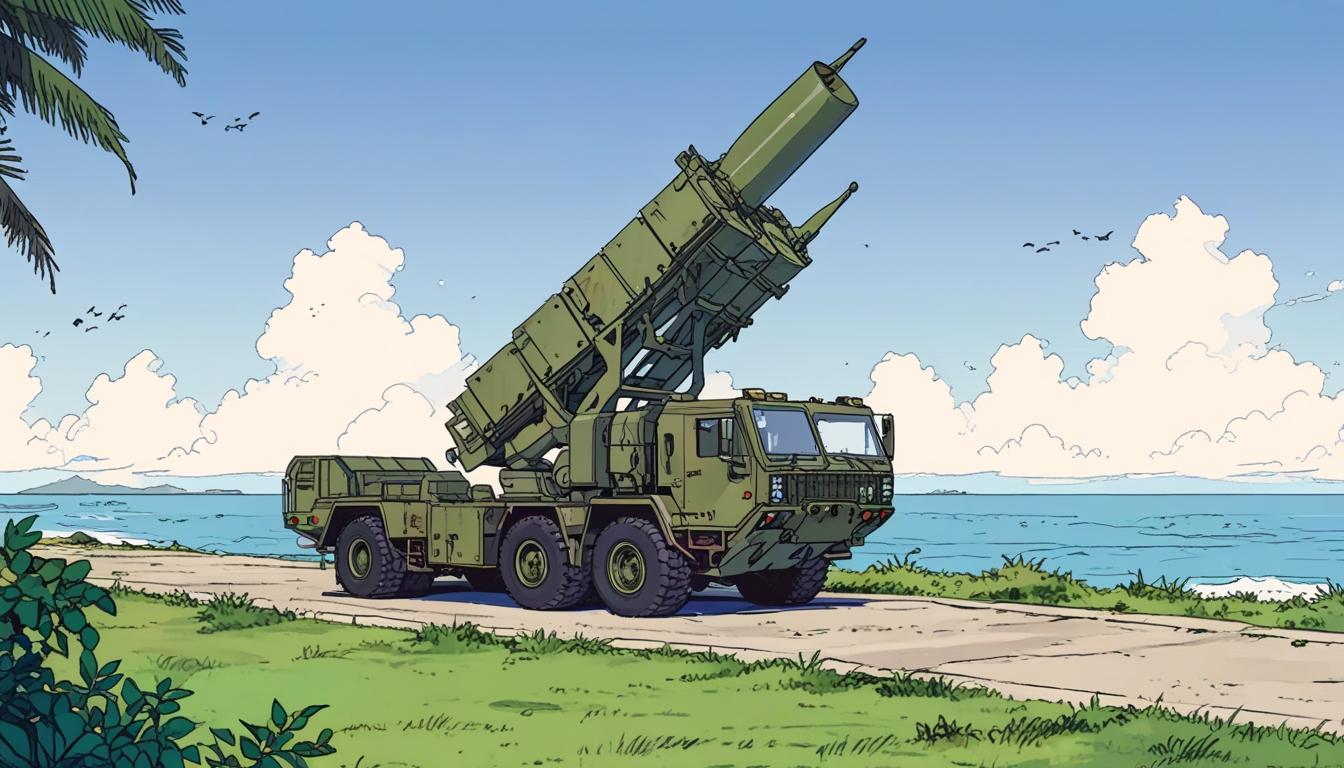The United States military has deployed an anti-ship missile launcher for the first time on Batan Island in the Philippines, a strategic location near a maritime border with Taiwan. This deployment forms part of the annual Balikatan military exercises, an ongoing collaboration between the U.S. and its longstanding treaty ally in Asia, the Philippines.
On Sunday, in Zambales province facing the disputed South China Sea, U.S. and Philippine forces, along with Australian personnel and observers from Japan and other nations, conducted live-fire drills. These exercises involved a barrage of missile and artillery fire that successfully intercepted and shot down several drones simulating hostile aircraft.
The mock battle scenarios enacted over the weekend closely simulated potential real-life conflict situations, staging operations near geopolitically sensitive areas that are key points in the increasing strategic rivalry between the United States and China. Around 9,000 U.S. military personnel, 5,000 Filipino troops, and at least 260 Australian forces participated in the combat manoeuvres.
In the days leading up to these exercises, a Chinese aircraft carrier group sailed near the Batanes archipelago. This was in proximity to the location where the U.S. had deployed the Navy Marine Expeditionary Ship Interdiction System (NMESIS) on the northern tip of Batan Island, adjacent to the Bashi Channel—a critical trade and military route south of Taiwan that both U.S. and Chinese forces aim to control.
Lieutenant General Michael Cederholm of the U.S. Marines, overseeing the deployment, explained to journalists, including representatives from The Associated Press, “The introduction of NMESIS into the first island chain for sea denial, sea control is another step in our force design journey.” He emphasised that the exercises were defensive in nature, stating, “We’re not here practicing a war plan. We’re practicing for the defense of the Philippines.” When questioned about whether the anti-ship missile system would remain after the drills, Cederholm responded cautiously, saying, “We don’t broadcast when we’re going in, when we’re coming out and how long things are going to stay. All I’ll say is we’re here at the invitation and with the support of the Philippine government. But I’m glad it’s here.”
China has expressed strong opposition to these military activities, viewing them as provocative. The nation had also previously objected to the U.S. Army’s deployment of a mid-range missile system in the Philippines last year, which included Standard Missile-6 and Tomahawk Land Attack Missiles stationed in a northern coastal area facing the Scarborough Shoal. The Shoal has been a site of frequent tensions, including confrontations involving Chinese water cannons and aggressive manoeuvres against Philippine coast guard and fishery vessels. Tomahawk missiles, with a range exceeding 1,600 kilometres, place significant targets within reach, including mainland China.
The ongoing Balikatan exercises, running from April 21 to May 9, will further involve training to defend Philippine islands from maritime assault, especially in the western province of Palawan facing the South China Sea and in northern Cagayan province close to Batanes.
Philippine Brigadier General Michael Logico highlighted the strategic importance of the drills, saying, “A peaceful region can only be maintained through a proper balance of strength between opposing forces until such time that … both countries decide that it’s not going to be worth it to fight over this area.”
Earlier in April, the Chinese military conducted large-scale drills around Taiwan, issuing warnings against the self-ruled island’s moves towards formal independence. These exercises saw involvement from various branches, including naval, air, ground, and rocket forces.
Historically, the Philippines hosted significant U.S. Navy and Air Force bases until the early 1990s when the Philippine Senate declined to extend the U.S. presence. However, under an agreement established in 1999, the U.S. resumed large-scale combat drills with Filipino troops.
Lieutenant General Cederholm emphasised the continued importance of the alliance, referencing the American cemetery in Manila where tens of thousands of U.S. military personnel and Filipino scouts are buried. “We take our treaty obligations very seriously,” he said, reinforcing the enduring military cooperation between Washington and Manila.
These developments underscore the complex military and geopolitical dynamics in the Asia-Pacific region, with exercises like Balikatan playing a central role in the ongoing strategic relationships and contests among key regional powers.
Source: Noah Wire Services
